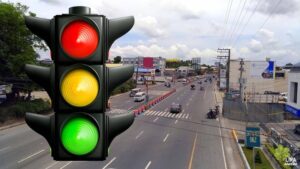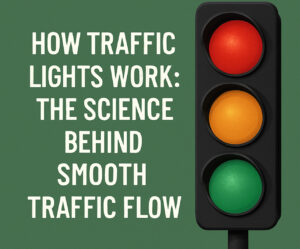Ever stopped at a traffic light, wondering how the entire system works so seamlessly? Whether you call it a stop light or a signal, this everyday device is one of the most essential tools in managing urban movement. These lights don’t just change colors randomly; they follow a carefully engineered process designed to regulate the flow of vehicles and pedestrians. Gaining insight into how the system operates reveals the science and planning behind every smooth commute and safe intersection. Know more..
The Purpose of a Traffic Light
At its core, a traffic light is designed to bring order to the chaos of roads. Without it, intersections would become dangerous free-for-alls. Its primary role is to assign right-of-way and ensure that vehicles and pedestrians move through intersections safely and efficiently. This is achieved by alternating between green, yellow, and red phases—each color representing a specific rule: go, slow down/prepare to stop, or stop. But there’s a lot more under the hood.
These systems aren’t just about regulation—they help reduce road rage, minimize accidents, and even contribute to economic productivity by decreasing commute times. A well-timed signal can be the difference between a congested roadway and a free-flowing one.
Components of a Stop Light System
Modern stop lights are far more complex than their early 20th-century predecessors. Today, the system includes:
- Signal Heads: These are the colored lights themselves (red, yellow, green).
- Controllers: The brains of the operation. These electrical devices manage the timing and sequence of traffic light changes.
- Detectors: Sensors embedded in the road or mounted on poles that detect the presence of vehicles or pedestrians.
- Timing Plans: Pre-programmed patterns based on traffic volume, time of day, and location-specific needs.
- Communication Systems: In larger cities, a traffic light can communicate with a central traffic management center to receive real-time updates.
Every time you approach these components are working together to manage flow and reduce delays. When integrated properly, the entire network of stop lights forms a kind of artificial intelligence that learns from traffic patterns and optimizes flow.
Fixed-Time vs. Actuated Systems
There are two main types of traffic light systems: fixed-time and actuated.
- Fixed-Time Signals: These follow a set schedule, regardless of traffic. For example, green might last 30 seconds in all directions, regardless of whether any cars are present.
- Actuated Signals: These rely on sensors and cameras to adjust timing based on real-time conditions. If there’s no one waiting on a side street, the stop light might skip its green phase.
Some systems even blend both methods into semi-actuated signals, where only side streets use detection, while the main road continues on a fixed timer. These types of hybrid systems help balance efficiency with safety.
Smart Technology in Traffic Light Control
Today, traffic light technology is getting smarter. Advanced systems now rely on artificial intelligence, machine learning, and real-time data from GPS, traffic apps, and vehicle-to-infrastructure communication to manage flow. Cities like Los Angeles and Singapore use adaptive control systems that analyze traffic patterns and adjust signals on the fly. This not only improves commute times but also reduces fuel consumption and emissions by minimizing idle time.
These intelligent solutions often integrate data from ride-share platforms, navigation tools like Google Maps, and connected vehicle networks. The result is a web of synchronized decision-making that adapts to changing road conditions with impressive speed.
Pedestrian Signals and Safety
A traffic light doesn’t only serve drivers. It also manages pedestrian movement with crosswalk signals. These are often coordinated with vehicle phases or come with buttons for pedestrians to request crossing time. In high-foot-traffic areas, these systems prioritize pedestrian safety without drastically impacting vehicle flow.
Some intersections now use auditory signals for visually impaired pedestrians or countdown timers to let walkers know how much time remains to cross safely. In high-risk zones such as near schools or busy shopping districts, stop lights may include flashing signals or extended walk times.
With more cities adopting walkable urban planning, pedestrian-focused will become increasingly important in shaping safe, shared road environments.
Emergency and Priority Vehicle Overrides
What happens when an ambulance needs to get through an intersection quickly? Many equipped with preemption technology. These systems detect emergency vehicles and temporarily override the regular sequence, turning stop lights green in their path to clear the way.
Some public transit systems also use priority signals to help buses and trains maintain schedules, improving efficiency and reliability. In some cities, fire trucks and police vehicles can even control a traffic light directly via transmitter, ensuring that life-saving services are not delayed.
Coordinating Multiple Traffic Lights: The Green Wave
In dense city areas, traffic engineers often synchronize multiple signals to create a “green wave.” If you’re driving at a consistent speed, you can hit several green lights in a row, reducing stop-and-go travel.
This coordination is especially common on main roads and during rush hours, easing congestion and improving fuel efficiency. The key is precise timing and constant monitoring of traffic data. If even one signal is out of sync, it can cause a domino effect that slows traffic significantly.
Green waves not only benefit commuters but also reduce CO2 emissions by decreasing unnecessary acceleration and braking.
Challenges in Traffic Light Management
Despite all the tech, stop lights still face challenges:
- Sudden traffic surges from events or accidents
- Malfunctioning detectors
- Weather conditions that interfere with sensors
- Human error in programming or signal coordination
- Power outages that disable traffic lights entirely
Engineers and city planners must constantly analyze data and adjust systems to keep things running smoothly. During inclement weather, for example, sensors may fail to detect vehicles accurately. In such cases, backup timing plans or manual overrides may be activated.
Future of Traffic Light Systems
The future holds exciting possibilities for lights:
- Vehicle-to-everything (V2X) Communication: Cars will communicate directly with lights for real-time updates.
- AI-Powered Predictive Systems: Algorithms will predict congestion and adjust signals proactively.
- Integration with Self-Driving Cars: Autonomous vehicles will rely heavily on synced, intelligent stop light systems.
- Environmental Optimization: Traffic systems may adapt to reduce pollution and noise in sensitive areas.
Future traffic lights may also include energy-efficient designs using solar power and LED technology, making them both smarter and greener.
Final Thoughts
The next time you’re waiting think about the complex web of engineering, data, and real-time decision-making working behind the scenes. Stop lights do more than keep cars from crashing—they keep cities moving. From simple timed cycles to AI-powered, adaptive networks, the traffic light is a marvel of everyday technology that deserves a little more appreciation.
Whether you’re driving, walking, or biking, that quick pause at a red stop light is part of a much bigger, smarter system designed to keep everyone safe and traffic flowing as smoothly as possible.
In a world that continues to urbanize, the role of a traffic light will only grow in importance. They may be small devices on poles, but their impact on mobility, safety, and sustainability is massive. So the next time you hit green, remember: you’re not just lucky—you’re part of a carefully coordinated system built to serve everyone on the road.





